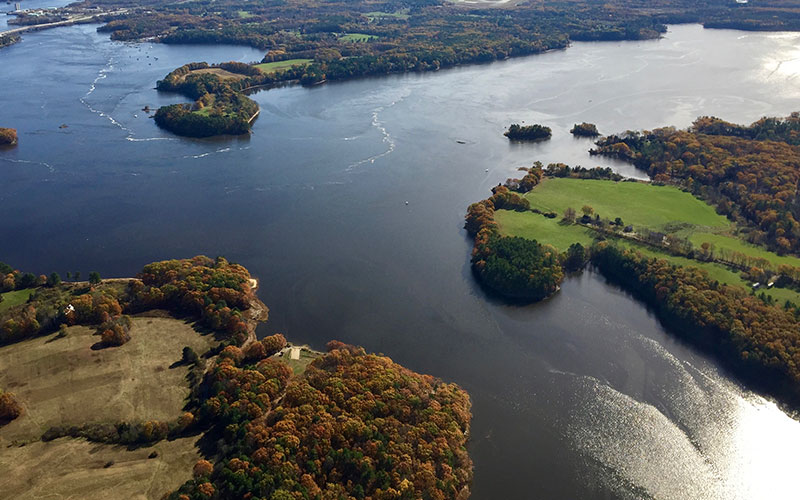
Great Bay. Photo via Lighthawk
May 14, 2020 (CONCORD, NH) – The nitrogen pollution damaging the Seacoast’s waters can be significantly reduced at a reasonable cost to towns in the coming years according to a new Conservation Law Foundation (CLF) study. The report provides a town-by-town roadmap for how communities in the Great Bay watershed can substantially reduce stormwater and non-point pollution and reverse the downward spiral in the health of the Great Bay ecosystem over the past 20 years.
“The Seacoast’s beautiful rivers and bays are in danger,” said Melissa Paly, Great Bay-Piscataqua Waterkeeper at CLF. “Under the surface, we’re losing the meadows of seagrasses that support the fish, shellfish, and wildlife that call the waters home. Towns have made progress reducing nitrogen, but we need to get much more serious about curbing the nitrogen that flows into our waters from septic systems and stormwater every time it rains. This report gives us a path to reach that goal.”
Nitrogen pollution is a leading cause of the unhealthy conditions now plaguing Great Bay. It flows into the estuary from wastewater treatment facilities, septic systems, and off of our roads and parking lots through stormwater. Many communities have stepped up to improve sewage treatment, but much more needs to be done to reduce nitrogen pollution in stormwater and from septic systems.
CLF commissioned stormwater management expert Robert Roseen, PhD. of Waterstone Engineering to develop a comprehensive stormwater management plan for 16 towns that are part of the Great Bay watershed which would be subject to a proposed new permit to reduce nitrogen pollution in the estuary.
Among other conclusions, the report finds that:
- Communities can reduce nitrogen loads by 45% at costs that are well within national norms, while still allowing for growth and development;
- Many of these nutrient control practices are simple and low cost, such as drywells for rooftop runoff, and can be implemented over time;
- effective management will not force communities to decide between protecting water quality and providing other necessary services.
The report offers cities and towns surrounding Great Bay a detailed path forward for improving land-use practices and water quality.
A summary of the report can be found here, and the full report is available upon request.
CLF experts are available for further comment.
###

